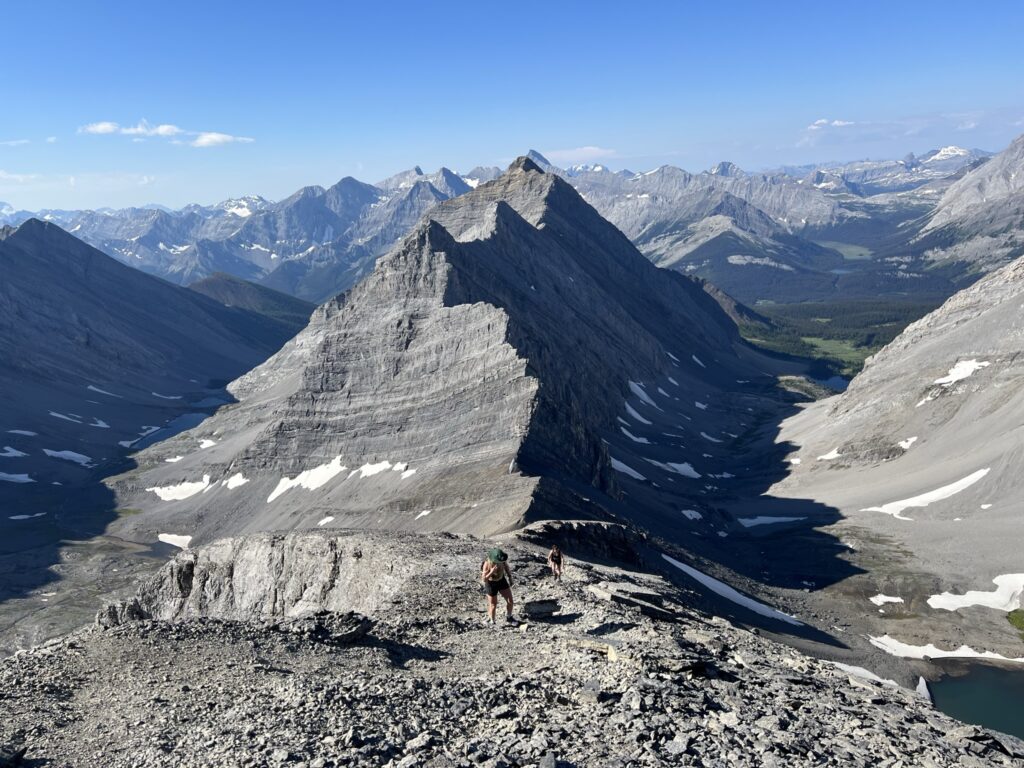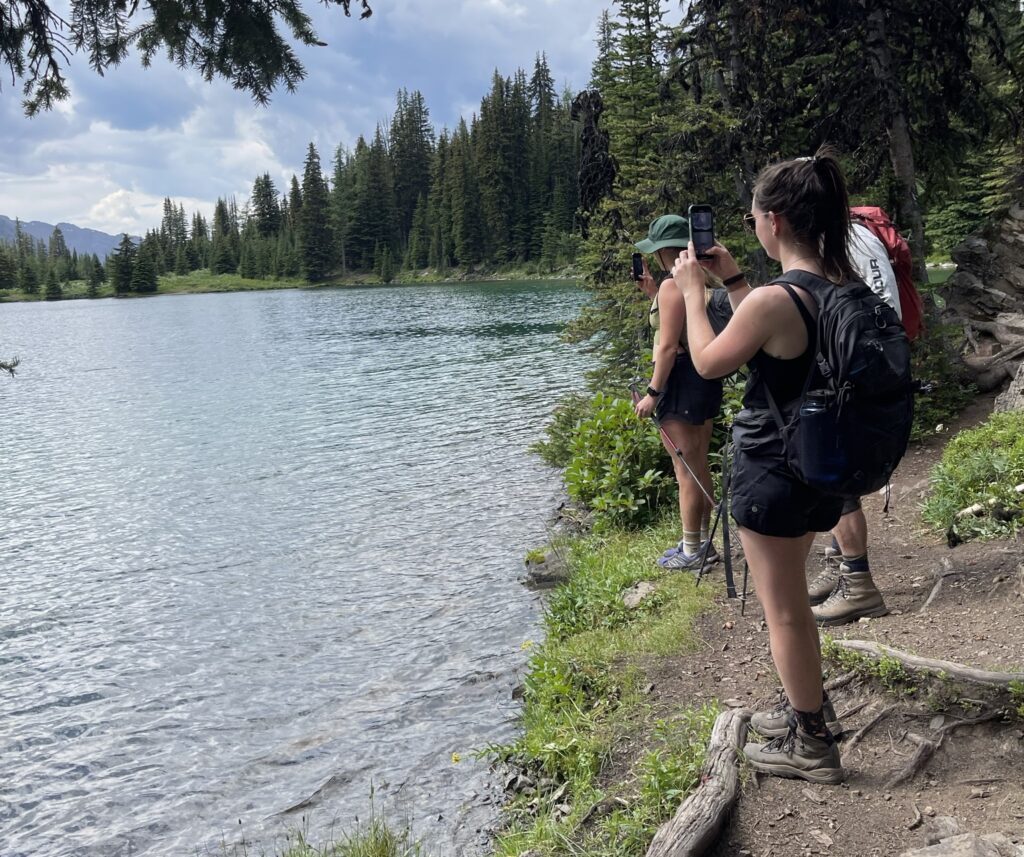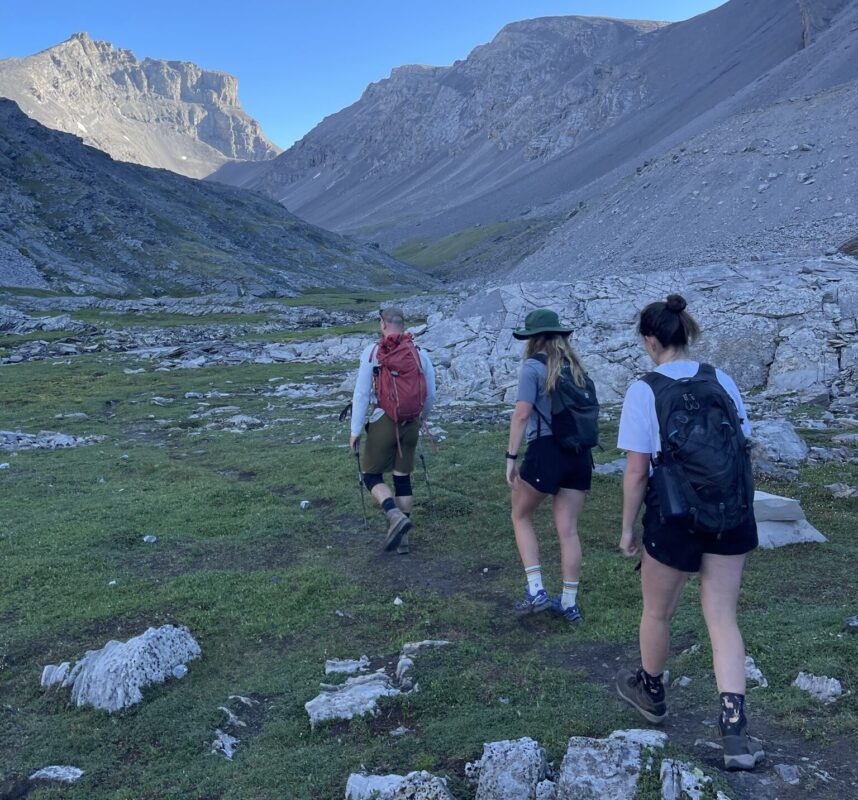Yes, you can hike in running shorts. Running shorts will perform well on easy to moderate trails, or on hiking trails that cover a large distance. However, running shorts might not always be an appropriate apparel choice.
Running shorts are usually quite short, and are made out of performance materials, like synthetics or natural fibers. They often have side-slits for movement, and sometimes have underwear or supportive mesh incorporated on the inside.
The specific features of your running shorts can play an important factor in their performance on the trails, and how comfortable you end up being while hiking in running shorts.

4 Pros of Hiking in Running Shorts
1. Absorb Sweat
Because running shorts are meant for high-intensity cardio exercise, they are meant to be able to handle sweaty bodies. Running shorts will wick sweat away from your body to keep you dry and comfortable.
Sweat causes chafing and irritation. By removing the sweat from your skin, you can help to reduce irritation.
Because running shorts tend to be quite short, they also maximize airflow to the legs. This will also help sweat dry through evaporation.
2. Supportive
Running shorts often have inner linings made out of mesh. These liners may offer all the support you need without underwear.
The benefit of this is that you don’t have to wear underwear. Underwear can be uncomfortable, chafe, and cause panty lines. The liner on a running short provides the support of underwear without the downfalls of underwear.
This mesh liner also adds increased air flow to the genitals, which helps remove moisture from the very sensitive area during increased activity. This can reduce chafing and irritation. It may also reduce the incidence of moisture-related infections.
3. Lightweight
Because running shorts are made for high-performance activity, they are meant to get you through your activity without weighing you down.
Running shorts don’t have much fabric, and the chosen materials are lightweight for additional movement. This keeps the shorts on the lighter side, decreasing your load when you’re hiking long distances or over large elevation gain.
4. Options
Running shorts actually come in a variety of options, which might allow you to find the pair that suits your needs perfectly.
Although running shorts are typically quite short, the length of the inseam can vary, which might make a difference in their comfort. Running shorts also have different shapes to their cuts, which can increase the movement of the garment as well.
Some running shorts even have a water-repellent coating. This can help on hikes when untoward weather strikes.
Another excellent option of running shorts is compression running shorts. They will be a bit warmer, help with circulation and muscle support, and are better at preventing thigh chafing.

3 Cons of Hiking in Running Shorts
1. Bunch Up
Running shorts tend to be shorter in the inseam than other shorts, which means that they often bunch up between the legs with movement.
Depending on the shape of your body and how you move, thighs that touch will sometimes cause fabric to move upward, allowing for skin-on-skin contact during activity. This can cause painful chafing and irritation if moisture (sweat), heat (body heat), and friction (hiking) are combined.
This chafing can cause skin to become raw, and might be so painful that you aren’t able to continue hiking.
2. Small Pockets or No Pockets
Due to the high-intensity activity that running shorts are designed for, they’re not meant to carry much weight, which would pull them down and make them heavy. Because of this, most running shorts do not have pockets.
If you can find a pair of running shorts that do have pockets, they’re often very small – just enough to hold a key or so. This isn’t overly functional on a hike when you’re carrying food, water, safety gear, and warm layers.
Although you can carry items in your pack, sometimes it’s nicer to have them easily accessible. Cell phones, for instance, tend to be more convenient in a pants pocket, where you can quickly pull it out to take pictures.
3. Not Warm
If you’re contemplating hiking in running shorts, you’re likely intending on hiking in warm weather, or generating enough body heat to stay warm. However, if the weather drops, if the wind picks up, or if you stop generating as much body heat, running shorts won’t be able to keep you warm.
It can be hard to predict weather in the backcountry, where weather stations aren’t prevalent, and different environments can have fluctuating weather patterns. Elevation changes can often lead to cooler weather, and varying terrain can cause wind gusts. Mountains are also prone to afternoon thunderstorms.
Sometimes when you’re hiking, your heart starts beating faster, and you generate body heat as you start working harder. This might make shorts feel like a comfortable choice, however, on the return hike, you often don’t need to work as hard. This can leave you feeling chilly on the way back to your vehicle.

When To Hike in Running Shorts
- If you find running shorts comfortable – If you’re used to exercising in running shorts and don’t find that they cause you any problems, you’ll likely find they’re equally adequate to use as a hiking short. However, if they do cause issues, those problems will likely be amplified on the trails.
- Warm weather hikes – On a hot summer’s day, it can be really nice to wear running shorts, as they are designed to allow for air flow, movement, and comfort. Running shorts will keep you as cool as possible while hiking on a hot day with little shade or sun protection.
- Trail running – Some hikers prefer to run parts of the trail, which is often referred to as “trail running”. Running shorts are made for fast-paced activity, which also tends to increase the heartrate even further, which then leads to an increase in body heat. Running shorts are the ideal choice for this activity.
When To Avoid Hiking in Running Shorts
- If they’re made of cotton – If you check the tag of your running shorts and notice “cotton” in the materials listed, it’s better to find a different pair of shorts for hiking. Cotton absorbs sweat and stays cold. This can lead to moisture retention and excessive cooling.
- If you’re prone to chafing – Because running shorts tend to bunch up, if you’ve ever experienced chafing or irritation of your thighs (known as “chub rub”), these might not be ideal pair of shorts for you to wear on a hike. Try something with more thigh coverage instead.
- Cold weather – Like all shorts, running shorts aren’t meant for cold weather as they won’t retain body heat. Pair them with exercise leggings for cooler days, but avoid wearing them alone when the weather is below body temperature.

Questions?
Is there something I didn’t answer? Do you have any experience hiking in running shorts? Drop a comment below and I’ll get back to you!
Happy trails!

